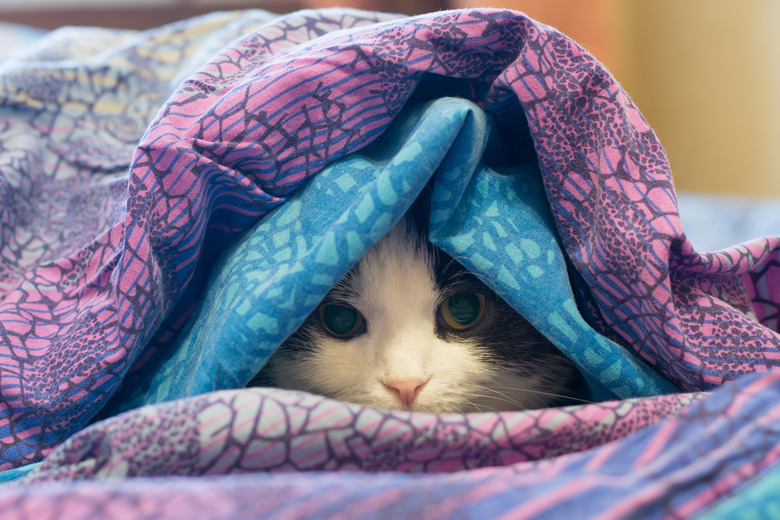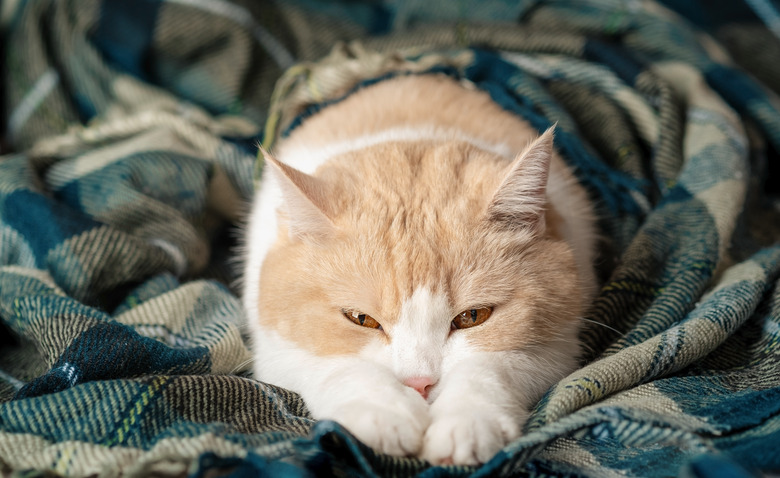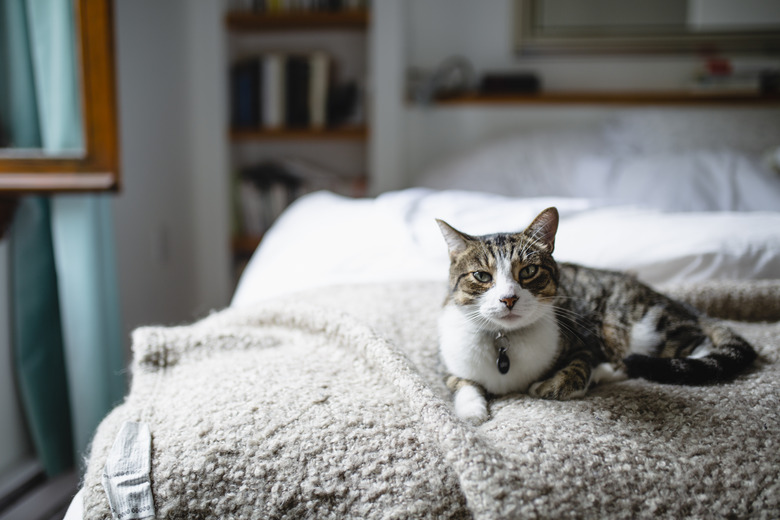Why Does My Cat Suck On Blankets?
It's no secret that cats exhibit many strange behaviors. From rubbing their heads against anything and everything, to kneading, to sitting on you, numerous cat behaviors can cause a cat owner to wonder why their cat is doing what they're doing. A cat or kitten suckling on blanket, or wool sucking, is one such behavior.
What is wool sucking?
What is wool sucking?
Wool sucking occurs when your cat sucks on a blanket or other fabric items, such as a sweater, bathmat, or carpet. Any cat can exhibit wool sucking, but it is most common in Burmese cats, Siamese cats, and Oriental mixed breeds. It is also more prevalent in young cats, specifically those under one year of age.
Why cats suck on blankets
Why cats suck on blankets
Why do cats suck on blankets? One reason cats may suck on blankets is that they were weaned too early as kittens. When a kitten is separated from its mother too soon, you may see the cat nursing on a blanket later to replicate the feeling of nursing. This can be prevented by allowing kittens to stay with their mothers until they're at least 12 weeks old. Even though cats are able to eat solid food at around 6 weeks of age, they may not be physically or emotionally ready to be separated from their mothers or littermates just yet.
Another potential cause of a cat suckling a blanket is stress. According to cat behavior expert Pam Johnson-Bennett, a sudden change in the cat's environment, such as a move to a new home or the arrival of a new baby, may cause stress that can lead to wool sucking. Separation anxiety is another stressor that might lead your cat to turn to wool sucking as a coping mechanism.
Dietary deficiencies or other underlying medical conditions can also increase the likelihood that your cat will exhibit wool sucking.
How to discourage wool sucking
How to discourage wool sucking
One way to discourage your cat from sucking on blankets or other wool items is to make these items less accessible. Placing the objects out of reach will prevent your cat from being able to suck on them. Also, if the kitten blanket is in a specific room, such as the bedroom, you can limit your cat's access to the room in question.
Another way to decrease your cat's urge to suck on blankets is to make sure they're getting enough playtime. Playing with your cat regularly can distract them from their urge to suck on wool objects while simultaneously relieving stress. You can even initiate playtime when you notice your cat is about to start sucking to divert their focus away from the behavior.
You can also take measures to ensure that your cat is adequately stimulated when you're not at home. Consider getting your cat a food-dispensing toy, or rotating your cat's toys every 1 to 3 days to increase usage. Other ways to boost environmental stimulation include providing a cat tree or scratching post so that your cat can displace anxiety through climbing or scratching.
When to call the vet
When to call the vet
In some cats, wool sucking is just occasional. As long as it's only happening every once in a while and the cat isn't chewing or ingesting the material, it's okay to allow them to continue sucking.
However, if the behavior is compulsive and the above measures aren't discouraging the behavior, it may be worth consulting with a veterinarian or cat behavior expert. It's also good to make sure the behavior isn't a symptom of an underlying medical cause.
There may be adjustments you can make to your cat's diet as well. Increasing the amount of fiber in their diet can cause them to feel fuller and may help reduce their urge to suck on or ingest fabrics. Discuss these changes with your veterinarian.


